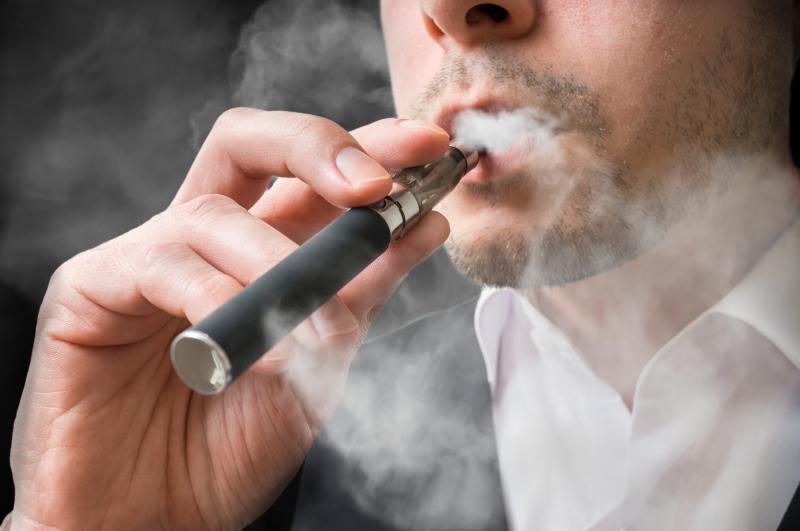 The purchase, use and possession of electronic nicotine delivery systems, such as e-cigarettes and vaporisers, will be banned in Singapore, starting early next year.
The purchase, use and possession of electronic nicotine delivery systems, such as e-cigarettes and vaporisers, will be banned in Singapore, starting early next year.Symptoms of dependence are relatively common among young people who use e-cigarettes and appear to lead to a more ingrained and intense habit, according to a recent study.
“This cohort study provides some of the most detailed evidence to date on the prevalence and symptom presentation of e-cigarette dependence and its association with future e-cigarette use among youth, to our knowledge,” said researchers. “Our results suggest that e-cigarette dependence symptoms may be associated with future vaping patterns.”
Of the 444 young adults (mean age, 17.48±0.39 years; 48.9 percent female) surveyed with past-year e-cigarette use, at least one symptom of dependence was reported in 52, yielding a prevalence rate of 11.7 percent. Thirty-four participants (7.7 percent) reported at least two symptoms, while 22 (5.0 percent) had at least three. [JAMA Netw Open 2020;3:e1921513]
Experiencing strong urges to use e-cigarettes was the most common symptom of dependence, reported in 38 participants (8.9 percent). This was followed by feeling the need to use the device (5.8 percent) and feeling addicted to the habit (4.2 percent). Other symptoms included having trouble concentrating when abstaining, using the device because of difficulties quitting, and irritability during abstinence.
Dependence was also more likely to occur in past-year dual users (16.4 percent vs 9.4 percent; p=0.04) and in those who used e-cigarettes in the past month (17.6 percent vs 5.2 percent; p<0.001). Notably, using e-cigarettes with nicotine also resulted in a significantly greater prevalence of dependence vs non-nicotine devices (15.2 percent vs 6.0 percent; p=0.004).
Similar patterns of effects were found for the prevalence of at least two or three symptoms of e-cigarette dependence.
In turn, signs of dependence at baseline fed into the habit. Those with at least one symptom of e-cigarette dependence were significantly more likely to show any vaping at 6 months of follow-up (odds ratio, 2.56, 95 percent confidence interval [CI], 1.34–5.01; p=0.005).
The same was true for the intensity of device use. Six months later, young adults with at least one symptom of dependence had more nicotine vaping days in the past month (rate ratio [RR], 2.50, 95 percent CI, 1.76–3.57; p<0.001), as well as sessions per vaping day (RR, 2.73, 95 percent CI, 1.84–4.06; p<0.001) and puffs per session (RR, 1.73, 95 percent CI, 1.14–2.62; p=0.02).
“These findings suggest that youth who report vaping may benefit from screening for e-cigarette dependence symptoms, such as cravings and perceived need to vape—symptoms that may be associated with risk of future vaping persistence and progression,” the researchers said.
“Dependence is an important health effect of e-cigarette use that should be considered in federal regulatory decisions that weigh the relative harms and benefits of e-cigarettes,” they added.